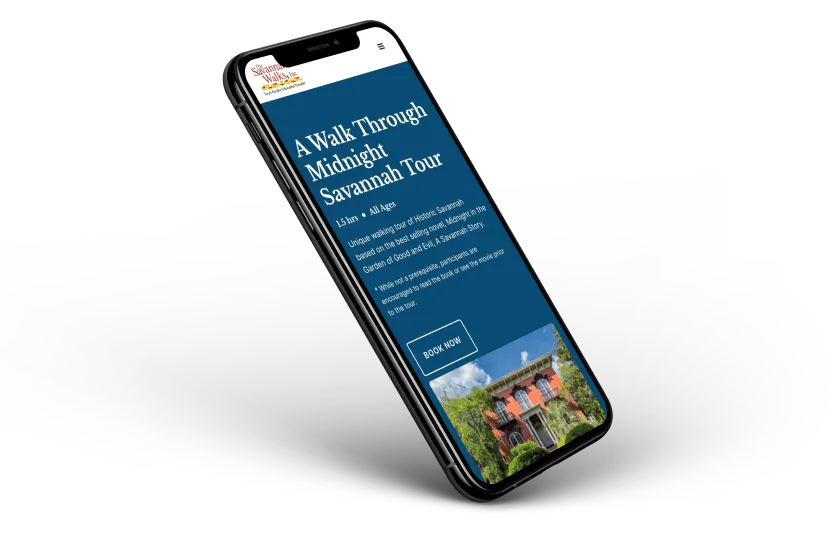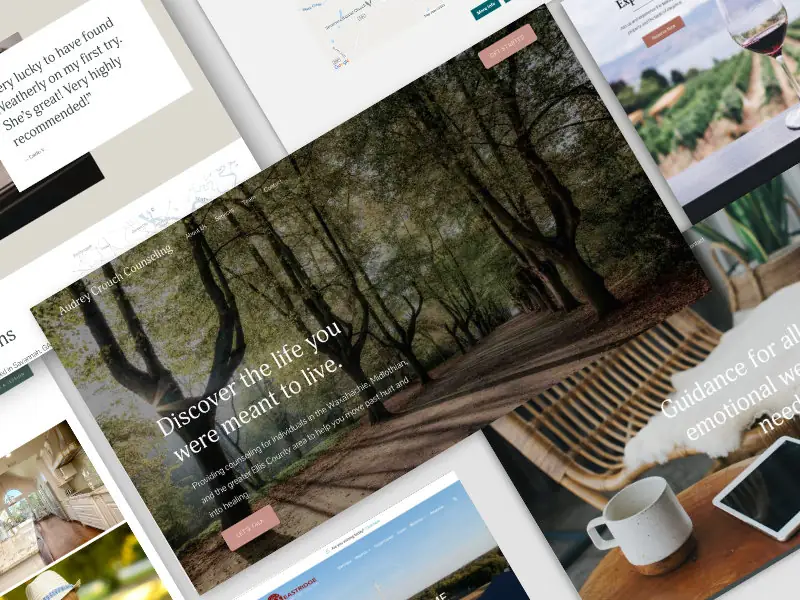Web Design
8 Myths About Web Design Debunked: Why Professional Designers Are Essential for Success

Web design and development is often misunderstood, with many people assuming it's simply about making a website look attractive.
In reality, web designers play a critical role in creating websites that are not only visually appealing but also functional, user-friendly, and effective in achieving their purpose.
Let’s look at the 10 common myths about web design. Along the way, we’ll also show you why partnering with a professional web designer is crucial for your website's success.
Myth 1: Web design is just about making a website look nice
Truth: While aesthetics are important, web design goes far beyond a pretty website.
Web designers ensure a seamless user experience, create a clear structure and navigation, and incorporate essential features to meet the specific needs and objectives of a client's website.
Myth 2: Responsive design is unnecessary
Truth: With the increasing number of users accessing websites from various devices and screen sizes, responsive design is essential.
A professional web designer ensures that a website functions properly on all devices, providing a consistent experience for all users.
Myth 3: Web designers only deal with visuals
Truth: Web designers are responsible for both the visual and technical aspects of a website.
As a web designer, you have to think about the final outcome, which means you must design for the web. Web designers need to understand what is technically possible and design within those limits.
That doesn’t mean every web designer will be able to build what they design. Sometimes advanced knowledge of HTML, CSS, and JavaScript are needed. But they do need to have some knowledge of those languages.
Recently, products like Webflow are bridging the gap between design and development, allowing designers to bring their creation to life.
Myth 4: SEO is separate from web design
Truth: Web designers incorporate SEO best practices into their designs to improve a website's visibility in search engine results and drive organic traffic.
This includes optimizing website structure, images, and content for search engines.
Web designers and SEO are closely interconnected, with web design playing a significant role in a website's search engine performance. Web designers incorporate SEO best practices into their designs to improve a website's visibility in search engine results and drive organic traffic.
This includes:
- Optimizing website structure: A well-structured website allows search engines to crawl and index content more efficiently. Web designers create a logical site hierarchy, implement clear navigation, and utilize header tags to ensure a search engine-friendly structure.
- Image optimization: Web designers optimize images by compressing them without compromising quality, using descriptive file names, and including relevant alt tags. This improves page load speed, enhances user experience, and helps search engines understand the context of the images.
- Content optimization: Web designers work closely with content creators to ensure that the content on a website is optimized for search engines. This involves using relevant keywords, creating engaging meta titles and descriptions, and structuring content with headings and subheadings for better readability.
Myth 5: Usability and accessibility are not essential
Truth: A professional web designer ensures that a website is user-friendly and accessible to users with disabilities by implementing best practices and adhering to accessibility guidelines.
A professional web designer places a strong emphasis on usability and accessibility, making websites user-friendly and inclusive for all users, including those with disabilities. By implementing best practices and adhering to accessibility guidelines, web designers create a seamless online experience that caters to a diverse audience.
- Clear navigation: Web designers prioritize intuitive navigation, using descriptive labels and logical menus to help users find information quickly and efficiently.
- Readability: Designers focus on typography, font size, color contrast, and line spacing to ensure that content is easy to read and understand for all users, including those with visual impairments.
- Consistent layout: Designers create a consistent layout across all pages, making it easier for users to understand the website structure and find the information they need.
Myth 6: Web designers don't need to understand marketing
Truth: Web designers must have a solid understanding of marketing principles to create websites that effectively communicate a brand's message and drive conversions.
Web designers understand the importance of collaboration with marketing teams and other specialists to deliver a comprehensive solution for clients. This collaboration ensures that the website not only looks aesthetically pleasing but also aligns with the overall marketing strategy and business goals.
Here's how web designers collaborate with marketers and other specialists:
- Understanding the target audience: Web designers work closely with marketers to understand the target audience's demographics, preferences, and pain points. This insight helps designers create a website that resonates with the target audience and encourages them to engage with the brand.
- Aligning with the brand identity: Collaborating with marketing teams ensures that the website design aligns with the brand's identity, messaging, and tone. This consistency across all marketing channels strengthens brand recognition and builds trust with the audience.
- Conversion optimization: Web designers and marketers work together to create designs that encourage user actions, such as signing up for a newsletter, making a purchase, or requesting a quote. This collaboration involves strategically placing calls-to-action, optimizing landing pages, and creating user flows that drive conversions.
- Content strategy: Web designers collaborate with content creators and marketing teams to develop a content strategy that supports the website's goals. This includes creating engaging, informative, and SEO-friendly content that attracts and retains users while reinforcing the brand's authority in its industry.
Myth 7: Websites don't need design updates
Truth: Regularly updating and redesigning a website is crucial to ensure it remains relevant, functional, and aligned with the evolving needs of your target audience.
A professional web designer helps keep your website up-to-date with the latest design trends, improving the user experience and your brand's online presence.
- Staying ahead of design trends: Web design trends evolve constantly, influenced by changes in technology, user preferences, and industry standards. Regularly updating your website's design ensures that it stays visually appealing, modern, and engaging to users.
- Enhancing user experience (UX): A well-designed website focuses on providing an intuitive and enjoyable experience for users. As user expectations change over time, it's essential to reevaluate and improve your website's UX to meet these evolving needs.
- Adapting to changes in your business: Your website should reflect your brand's current offerings, messaging, and goals. As your business evolves, it's essential to update your website's design to ensure it accurately represents your brand and continues to support your marketing and sales efforts.
- Boosting search engine visibility: Search engine algorithms are continually updated to prioritize websites that provide the best user experience. Regularly redesigning your website with SEO best practices in mind can improve its visibility in search results and drive more organic traffic.
- Increasing conversions: A well-designed website can significantly impact your conversion rate by guiding users through a seamless journey from discovery to action. Updating your website's design allows you to optimize user flows, calls-to-action, and other elements that contribute to conversions.
Myth 8: A professional web designer is too expensive
Truth: Investing in a professional web designer can save you time, money, and frustration in the long run.
They have the skills and expertise to create a high-quality website that meets your needs, helps you achieve your goals, and provides a strong return on investment.
Why is hiring a professional web designer a smart investment?
- Better design and functionality: A professional web designer understands the principles of design, usability, and accessibility, ensuring your website not only looks great but also functions seamlessly. A well-designed website can make a significant difference in user engagement and conversion rates.
- Faster design: With their experience and expertise, professional web designers can create your website more efficiently than you might be able to on your own. This saves you valuable time and allows you to focus on other aspects of your business.
- Optimized for SEO: Professional web designers understand the importance of SEO and incorporate best practices into their designs to improve your website's visibility in search engine results. This drives more organic traffic to your site, increasing the potential for leads and sales.
- Scalability and future-proofing: A professional web designer can design your website with growth in mind, making it easier to expand and update as your business evolves. They also stay current with the latest design trends and technologies, ensuring your website remains relevant and competitive over time.
- Higher ROI: While hiring a professional web designer may require an upfront investment, the long-term benefits often outweigh the costs. A well-designed, high-performing website can generate increased traffic, leads, and conversions, providing a strong return on investment.
Conclusion
Web design is a complex and multi-faceted field that plays a crucial role in the success of your website. A professional web designer ensures that your website is visually appealing, functional, and effective in achieving its purpose. By using a platform like Webflow, web designers can further streamline the design process and bring their creative visions to life.
Investing in a professional web designer helps overcome pain points, saves time and money, and ensures a website that caters to your audience's needs. Platforms like Webflow enable designers to create responsive, SEO-optimized, and accessible websites, contributing to your website's long-term growth and success.
Don't leave your web design to chance. Partner with CL Creative, a Dallas-based Webflow design and development agency, to create a website that exceeds your expectations. We specialize in web design and development, SEO, and photography, delivering comprehensive solutions tailored to your unique business needs.
Let CL Creative elevate your online presence, enhance user experience, and drive growth for your business. Get in touch with us today and take the first step towards a professionally designed website that sets you apart from the competition.
End to End Webflow Design and Development Services
From Web Design and SEO Optimization to Photography and Brand Strategy, we offer a range of services to cover all your digital marketing needs.

Webflow Web Design
We design custom Webflow websites that are unique, SEO optimized, and designed to convert.
Webflow Maintenance
Gain peace of mind knowing that a Webflow Professional Partner is maintaining your website.

Claim Your Design Spot Today
We dedicate our full attention and expertise to a select few projects each month, ensuring personalized service and results.






